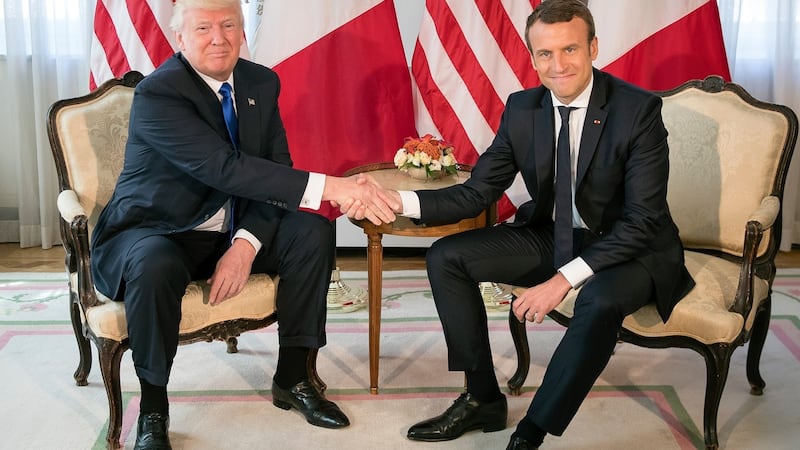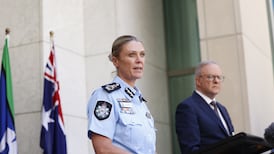They say the handshake originated as a gesture designed to prove that both participants were unarmed.
But Donald Trump has rewritten that rule along with all the others. In the hands of the US president, the handshake is a weapon.
And now, thanks to the newly elected president of France, we have confirmation that the rest of the world's leaders are fighting back.

Emmanuel Macron’s admission that his white-knuckle clinch with Trump - in which the two men appeared to be engaged in a squeezing duel that saw the US president break off first - was “not innocent” is hardly a surprise.
His thinking was plain to see, as he crushed Trump’s hand until the latter’s fingers seemed to quiver for mercy. What began as a manly greeting ended as a kind of death grip.
No less apparent was the French leader's swerve to avoid shaking hands with Trump when meeting his Nato partners, pointedly preferring to greet Angela Merkel first. Macron had clearly clocked the way the US leader uses body language as a form of warfare - and resolved to fight him in kind.
For Trump, the handshake is less a gesture of peace than a declaration of superiority. Note the grip he gave his supreme court nominee, Neil Gorsuch, yanking the judge towards him as if he were a pet dog on a leash.
Alpha male
Trump made a similar show of alpha male supremacy with Shinzo Abe, clasping and tugging at Abe's hand for a full 18 seconds - and prompting a memorable eye-roll from the Japanese leader.
James Comey, then director of the FBI, was on the receiving end of a similar attempt to demonstrate ownership.
“You work for me,” Trump seemed to signal as he pulled in Comey with that signature tug and an attempted hug. It has since emerged that the move appalled Comey, who had sought to hide in the curtains rather than be subject to such a display.
All of this is quite a shift in the art of the political handshake. Before Trump, any controversy over the gesture usually centred on whether it would happen or not, and whether it would be in public or private: think of Gerry Adams and Tony Blair.
Discomfort
Only rarely was the manner of the handshake a point of contention.
In September 1993, Israeli prime minister Yitzhak Rabin won plaudits at home for the visible reluctance of his handshake with the Palestinian leader Yasser Arafat: he had made the move, but also shown his discomfort.
Trump has upended all that, withholding handshakes from America’s friends -
he ignored Merkel's requests to press palms during a White House photo op
- but showing physical warmth to assorted dictators and adversaries of the US, from Egypt's President Sisi to Russian foreign minister Sergei Lavrov.
Still, Trump's fellow world leaders have been swift to learn the new rules. Canada's Justin Trudeau went for a pre-emptive grip of the Trump forearm, making any Gorsuch-style yank impossible, while Macron fought alpha male fire with fire. Thanks to Trump, what was once a gesture to indicate being without weapon has triggered a new unarmed race.











